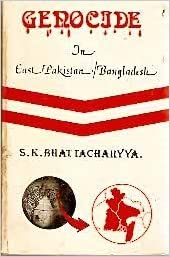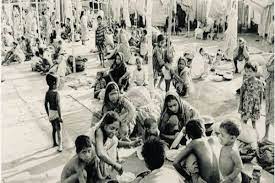ISBN NUMBER: 0-9611614-3-4
NUMBER OF PAGES:
PRICE: $16.50 (paper back edition), $17.50 (hard cover edition)
AUTHOR: S.K. Bhattacharya
PUBLISHER: A. Ghosh (Publisher), Houston, Texas, USA.
YEAR PUBLISHED: 1987
REVIEWER(S): Howard Spickler of New South Wales, Australia, first published in the Rationalist News of New South Wales in 1988
Lest anyone should hold the opinion that religious faith is a broad, socially binding influence and a contributing factor to the well-being and stability of a nation, that quaint notion is devoid of truth and certainly lacks demonstration in the unhappy situation that divided India finds itself today – all of which is clearly chronicled in this informative book.
It is fairly common knowledge of the conversant segment of society that India has always been home to a large and varied collection of philosophic cults, religious faiths and practices.But it must be said that these have, for the most part, been harmonious and tolerant of each other, which epitomises the accommodating and easy-going temperament of the Hindu people. Such sectarian tolerance was a feature of Ancient Rome before the advent of Christian bigotry.
However, religious fanaticism and cruelty displayed its ugly face with the subjugation of India by invading Islamic conquerors. The Mogul Emperors charted a course of desecration and deliberate destruction of much of Hindu culture and heritage, and divided the people by a ruthless campaign of forced coversions to the Islamic faith.
By 1763, Mogul power had declined and the British continued the dominance and exploitation for nearly two centuries. After World War II, Great Britain realised that its grip on the country was slipping and that the lucrative years of domination were over. The rightful clamoring for independence could not be denied. To its lasting shame it agreed with the Muslim League that demanded a separate homeland for that portion of the population who are the descendants of those earlier, brutalised converts.
In 1947, the countries of West and East Pakistan (now Bangladesh) were carved off India and the promised protection of full rights and safe domicile for the trapped Hindu minorities has not been fully honored. The discrimination and suffering that is now being endured by these indigenous Hindus is the direct legacy of Indian and Pakistani ineptitude and apathy. Persectuion and unrest became the inevitable consequence of Muslim religious fervor and hatred.
The sytematic molestation, rape and killing of millions of Hindus in Bangladesh is an affront to human dignity and a sickening saga of unrestricted depravity. It demands world attention and correction and highlights the savageness of religious thuggery running riot, bent upon extermination.
India is illustrative of what can happen to a once rich, proud and culturally wealthy country that now suffers from over population and religious division. Countries like Australia could well benefit from observing the Indian experience and adopt some foresight and care in the planning and mixing of their religious and cultural pie.
Many fine and informative contributions in this book by a number of knowledgable authors, presents the reader with a complete, overall picture of the facts, figures and the persons that have been involved in the Indian dilemma before and since partition. Very necessary reading for all those who value human dignity, rights and social freedom.
As an addendum to the above review, it is pertinent to mention that the Gulf War highlighted the international thirst for the dirty dollars of the armament trade. The Australian Government, fully aware of the simmering, delicate situation that prevails between Pakistan and India, has indecently sold fifty mirage fighter planes to the hostile government of Islmabad, no doubt paid for by Arab petrodollars that pour in to any aggressive Islamic cause.


